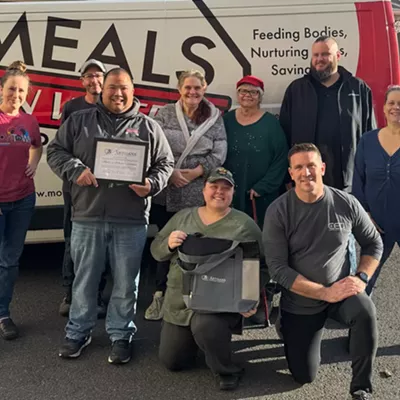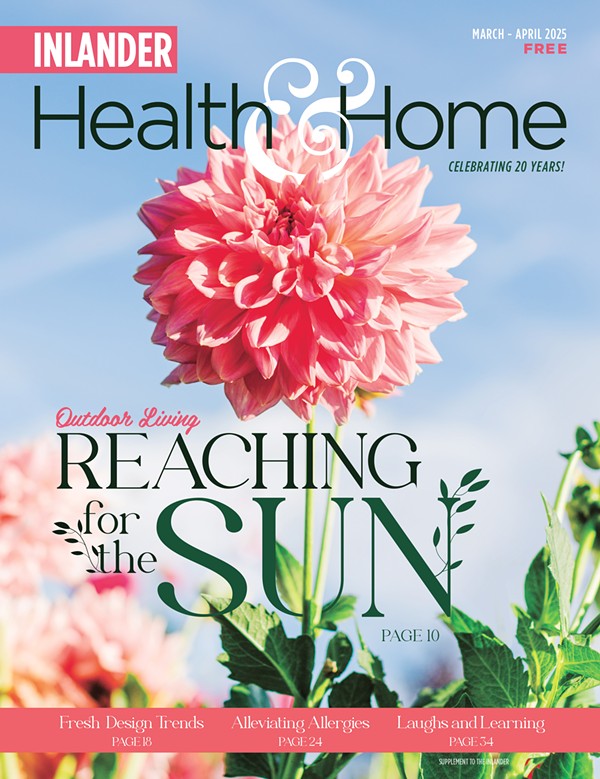I'm sure most of you reading this have either been in the McCarthey Athletic Center or have at least watched a Gonzaga game on TV. Imagine standing at midcourt, looking all around the arena: Now imagine that all the faces you see are young, with about twice as many males as females. As you look around 360 degrees, there is no dancing, no clapping, no cheering, no music.
This is not a celebration of sport. There is no joy. This is a funeral.
Imagine the arena is filled with those, ages 15-24, who died in 2014 from a firearm injury; tomorrow, you could fill it with 6,000 more adolescents and young adults, those who died from guns in 2015, then 2016, then this year.
This is not about the Second Amendment, bump stocks, high-capacity magazines, waiting periods to buy firearms, gun shows or online purchases of gun parts. This is about risk reduction, about safe storage of firearms and ammunition, for a very practical reason: Secure storage saves lives.
As part of the standard questionnaire we give parents visiting my office, we ask if there are firearms in the home; if so, are they unloaded and securely stored? I'm always surprised at the range, and lack of, responses. This question is very important, because the reality is (according to 2014 data from the Centers for Disease Control and Prevention) firearms are annually involved in the deaths of more than 6,000 children and young adults between the ages of 15 and 24 in the U.S.
In this group, around 200 deaths a year are due to the accidental discharge of a firearm, about 3,500 are homicides, and the remaining 2,300 are due to suicide. Although all causes of death are important, I want to focus on to focus on suicides that occur between ages 15 and 24. In the U.S. in 2014, more than 5,000 15-to-24-year-olds took their own lives. That amounts to an average of 14 kids a day, and six of those 14 used a gun to kill themselves.
Sadly, the number of suicides in this age group has risen steadily over the past 20 years. Suicidality is most often a time-limited crisis, with the great majority of individuals surviving the crisis. But when suicide attempts are made, they are often made impulsively; lethality becomes very relevant. Suicide attempts using a firearm are approximately 90 percent successful. Fatality from ingested poisons? Approximately 2 percent. For those who survive a suicide attempt, nine out of 10 never go on to commit suicide.
Of a population of individuals who survived a near-lethal attempted suicide, the time between the decision to attempt suicide, and the attempt itself, was less than five minutes for 24 percent, less than an hour for 71 percent. There is robust data that the risk of dying from suicide is much higher if there is a firearm in a household, and up to 30 times more likely for kids with no history of mental health problems if a gun is stored unlocked and loaded.
One study suggested that keeping firearms locked away and unloaded can reduce the likelihood of suicide by a gun by more than 70 percent. When a household has a child or young adult 10 and older, firearms and ammunition should be completely removed from that house; it should just be another measure of childproofing a house.
If one chooses to possess firearms in the home during this period of elevated risk of suicide using a firearm, store them securely, with ammunition stored separately. There are numerous methods to do this: individual gun locks, gun boxes and safes that have key, code or biometric locks. Under the mattress? In the back of the closet? On top of a shelf in the garage? Not safe.
To reiterate, I am not taking issue with the Second Amendment; I want to just educate regarding risk, as it exists. Suicide is the second-leading cause of death in young adults between ages 15 and 24. Firearms are the leading cause of death in these suicides. n
















